JRPG Throwbacks: Some "Do"s and "Don't"s
By Mento 1 Comments
In the many decades I've been kicking around this increasingly imperiled blue orb of ours, I've played through more than my fair share of role-playing games from Japan, or those rare games made in the west inspired by same. The boundaries between what counts as eastern and western in RPG design have become all the more obscured over time, but back in the early '90s when I was getting my foot in the door with the likes of colorful, earnest escapism like Secret of Mana and Illusion of Gaia there was such a stark contrast between what they were doing and the bespoke D&D parties and narrative-free dungeoneering of their western peers that I'd been playing on my Atari ST.
The core essence of a good JRPG is something I want to discuss today, as I look into the many ways "throwbacks" - either those created by aspirant Indie studios, or the original development studios after feeling a bit nostalgic - have tried to both homage and revolutionize that JRPG golden era of the '90s, broadly speaking.
Do focus equally on the two most vital genre qualities: narrative and mechanics
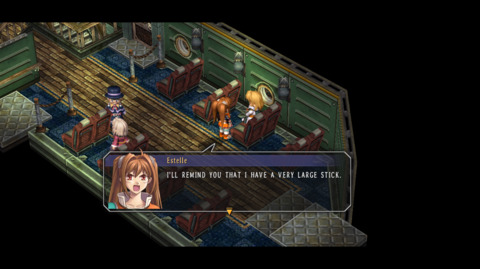
Any JRPG is going to spend a lot of its runtime on its narrative, whether that's developing character arcs, establishing new settings and the related ecologies/economies, or a procession of exposition-laden cutscenes between dungeons and boss fights. As that's all a given in any JRPG excepting perhaps the Souls games, it stands to reason that you want it to be well-written, and the characters relatable and likeable in their own idiosyncratic ways without coming off as empty archetypes. Likewise, JRPG gamplay is frequently known not only for its mechanical complexity, but also its distinctiveness: Japan isn't as beholden to AD&D as a lot of western RPGs are, which tend to use variations of that ruleset (or peers like GURPS) as either their bedrock or as a launching point, and thus so many JRPGs tend to carve out their own path unfettered by expectations and precursors (excepting those from the same series, since some amount of consistency is warranted).
Even if it's only a "throwback" because Falcom tends to be a little behind the curve when it comes to dropping huge production budgets into their games, Trails in the Sky is the gold standard when it comes to "old-school" JRPGs widely available today. The Trails series is renowned for their quality scripts and localizations, and by the time you hit the Second Chapter the mechanical complexity of the combat has found its niche and will really throw some fastballs at you once it's reasonably assured you can handle them. The Bracer Guild mission structure and Orbment Grid customization are tricky to master too, but rewarding once you've figured them out. Trails strikes the perfect balance between those two integral components, and it's why such an ancient looking game series can command the high level of respect that it has. (I wrote more about Trails and the Legend of Heroes franchise it hails from over yonder, if you'd like a spoiler-free primer.)
Don't be too slavish about the conventions of old
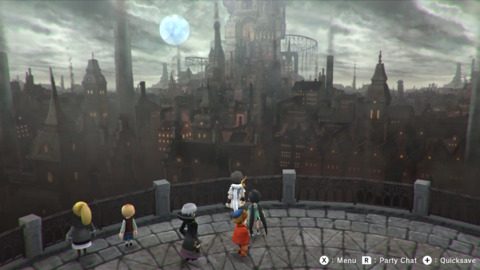
There's a temptation when working on a 16-bit JRPG to be as faithful as possible to the old guard; after all, as the common wisdom goes, if you're trying to sell your game to those who grew up with this console generation of yesteryear you want it to be as era-accurate as possible, right? But in ignoring the decades of gradual game design improvements to the genre, or at least those that might still feasibly apply to an older blueprint, you're left with a game that just feels out of time. Quality of life improvements and a consideration for the player's free-time can modernize a JRPG experience in a wholly positive way without compromising its retro appeal via more overt characteristics like the aforementioned narrative and gameplay. Even a throwback that uses never-before-seen features and ideas can feel hopelessly antiquated if it drags because of overzealous random encounter frequency or a lack of modern features.
Square Enix, from what I've been able to tell mostly from contemporary reviews rather than first-hand experience, falls afoul of this misconception with those games produced by their well-intentioned subsidiary Tokyo RPG Factory, after being inspired to return to their 16/32-bit roots after noting the success of Bravely Default by Silicon Studio (which I recently learned also made the excellent nostalgia piece 3D Dot Game Heroes). I've been playing a bit of Lost Sphear this week, the second of (so far) three TRPGF games, and while there's a lot to appreciate the game it still feels a bit antiquated in certain regards and lethargic with its pacing. For instance, it makes the appreciated step of eliminating random encounters, which also means moving around the world map never triggers a fight: however, this also leads to stretches where you're wandering around the world talking to NPCs to move the story along where you don't fight anything for like an hour. The game also uses a more hurried version of the active time battle gauge, a system responsible for a lot of Square's successes in the '90s starting with Final Fantasy IV, which makes it hard to properly strategize once your characters gain more abilities to use and bosses require a more fine-tuned strategy (exploiting elemental weaknesses, alternating physical and magical attacks, etc.) to defeat. I like Lost Sphear's setting and story - the idea of a world facing a metaphysical crisis as areas and people suddenly blink out of existence is kinda chilling - but playing it has been a largely ambivalent affair. I can't help but wonder how much of that is because it feels a little too deliberately creaky and hoary than other recent throwbacks I've played.
Do use a hand-drawn art style if possible
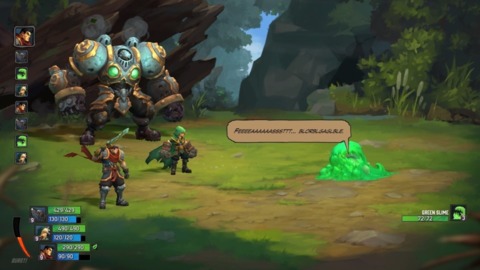
One commodity of the modern age is that you don't have to be beholden to the limitations of older hardware. Even if you're making a 2D side-scroller or something with a fixed overhead camera perspective, it doesn't mean characters and environments can't be rendered in 3D or use high-definition vector graphics. One of the most attractive games of the past five years was the Wonder Boy: The Dragon's Trap remake, which was an almost exact duplicate of an 8-bit platformer for the Master System: the chief difference being the new graphical facelift, which switched the stumpy pixel sprites for smoothly animated, hand-drawn creations.
An example of a very by-the-numbers 16-bit JRPG ersatz with highly detailed character graphics and animations was the Battle Chasers: Nightwar adaptation, based on a long-running comic book series. It was important to the developers to get the tone and the visuals of the original source medium right, and so the game looks fantastic even if it's still structurally a familiar turn-based RPG where the heroes stand on one side and the enemy on the other swapping blows and magic.
But also...
Don't feel bad about using pixel art if it's fancy enough
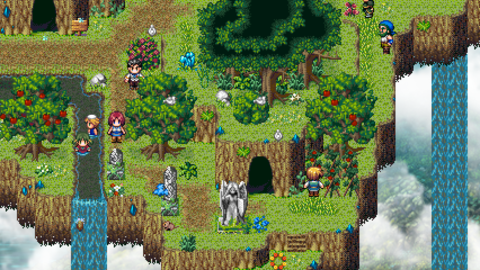
There are many reasons to retain the pixel look: authenticity, it's the artist's preferred style, and that they're comparatively cheaper to make (I'd assume, given the art tools required for the alternatives). Even with a certain pixel count limit, modern games with that art direction are still free from the strict limits imposed by the resolutions and simultaneous sprite counts that older systems were saddled with. I think it is a little harder to stand out if you decide to use pixel graphics, just because they're so prevalent, but with a talented and dedicated enough art team you can still pull off miracles with the format.
I actually have two examples here: one that goes all out with its pixel graphics to an almost absurd degree, and another that takes them in a direction I'd never seen before. The former is Ara Fell, an RPG Maker-developed game that fills each of its scenes with so much incidental detail that it's almost overwhelming: it makes each of its areas so much more visually arresting to explore, as you pick out the treasures and materials in the background you can actually collect and use. The latter is Octopath Traveler, which uses a dimension of depth to make its flat but otherwise intricate pixel characters stand out all the more.
Do remember that strategy JRPGs are also valid
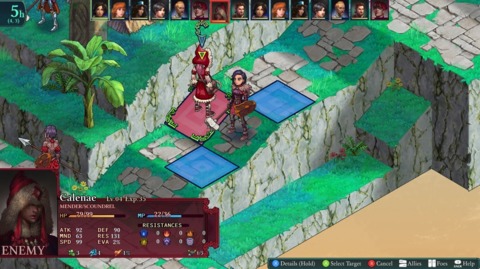
SRPGs have been quietly building acclaim in the background for as long as they've been around, rarely grabbing the spotlight the way a flashy new Final Fantasy might but still nurturing a fanbase more inclined to moving around grids and playing rock-scissor-paper with troop types. New Fire Emblem entries typically get the most attention, but Nippon Ichi Software has carved out its own niche with their Disgaea series and Indies have started trying their own spins on the more story-focused PS1 SRPGs like Arc the Lad, Vandal Hearts, and, of course, Final Fantasy Tactics. It's an avenue to explore if a more leisurely-paced, tactically-focused approach is for you.
Fell Seal: Arbiter's Mark is the most flagrant attempt at an Indie Final Fantasy Tactics (or Tactics Ogre, if you want to go further back in the genealogy) I've encountered, and mostly nails the deeply complex Job system and its endless number of cross-class customization options. It's a mite more challenging as a result, as you'll frequently face enemies with stronger specializations than your own party if not the same degree of versatility, but if you loved Final Fantasy Tactics and were a little disappointed that late-game enemies didn't take full advantage of all those high-level Jobs and abilities, Fell Seal has you covered. Just don't expect anything quite as elaborate as Yasumi Matsuno's Shakespearean plotting from its story.
Don't be afraid to mix it up with even more genre hybrids
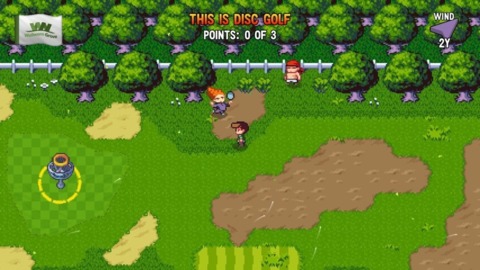
Now I'd be the last to suggest that JRPGs aren't a strong enough genre to stand on their own, but I feel like if you're going to go back to the drawing board for some new twist to stand out in this sea of throwbacks you might consider bolting something onto the core progression, or adapting a different genre to be more like an RPG. The PS2 era in particular was fond of hybridizing the JRPG format, with the likes of Dark Cloud and Persona, but there have been shaky experiments as far back as the TurboGrafx's Final Lap Twin and World Court Tennis from 1989. Not only is there untapped potential in the many mergers that have yet to exist, but the juxtaposition of two dissimilar genres can be a great source for comedic writing.
A fine recent example would be Golf Story for Switch, released in 2017 a few months after the system's launch. While largely a 16-bit JRPG in presentation only, the quest structure of the game and its emphasis on a narrative - with every challenge and "battle" revolving around golf in some way - made a compelling case for combining sports, RPG mechanics, and dumb jokes. I might not have enjoyed the way the golf physics felt in that game, but I loved exploring it and living in that world of golf-obsessed weirdos and the little arcs that would foment, like the rivalry between the protagonist and an overly aggressive teenager. Hearing that the same devs are working on a broader "Sports Story" makes me excited to see what they come up with.
Do remember to copy from the best
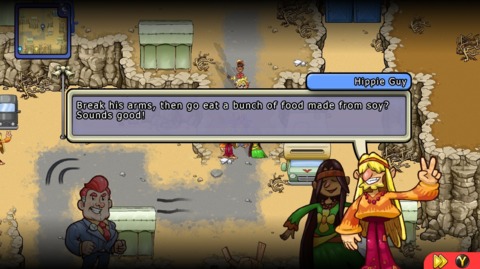
A problem I've encountered with many JRPG throwbacks is that they don't really aim to emulate any game series in particular. Granted, this helps them stay on the right side of the defendant's bench, but on the other hand it leads to these games feeling a bit indistinct in their creative direction. Like you're painting a whole genre with broad strokes and creating an indistinctly familiar amalgamation rather than putting your own spin on an older oddity that maybe didn't get the time in the sun (and contemporary imitators) that it deserved. That's certainly the case with games like EarthBound, which didn't inspire as many clones as the more traditional RPGs of its era, but has since seen its fair share of homages from a score of Indie developers who found its optimistic, surreal charm highly formative.
Citizens of Earth (and presumably its sequel Citizens of Space, though I've yet to play it) made the conscious decision to base its world in a vaguely '50s version of small-town America replete with little green men and other sci-fi silliness in the mold of an EarthBound, but also incorporated a Suikoden structure where you could keep expanding your party of followers to a ridiculous extent, often jumping through hoops to ingratiate the final few dissenters. I'd also be remiss if I didn't also mention Undertale, as creator Toby Fox would be the first to tell you of the many eccentric influences that went into his Indie darling (not least of which was Moon: Remix RPG Adventure, freshly remastered for Switch). Happy fifth anniversary, Undertale!
Don't bite off more than you can chew
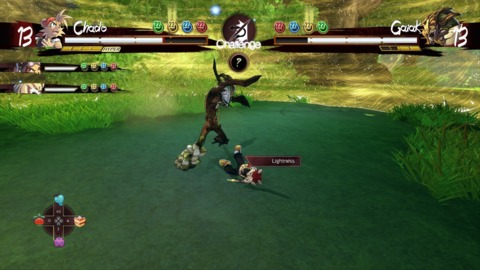
A primary reason Indie developers stick to making games of yesteryear than something that could compete with the modern AAA industry is a matter of resources and man(person?)power. When an Indie developer does try to shoot for the moon with a lavish 3D RPG with all sorts of systems upon systems, they can sometimes end up with an underbaked mess on their hands. The sheer amount of time and money that emulating something as prolific as Final Fantasy XV, Xenoblade Chronicles 2, or Tales of Berseria, could open you up to any number of delays, technical issues, and hurried segments (even Final Fantasy XV itself barely made it out of development hell). It's fine to be ambitious, since that's how the industry grows and opens up new avenues, but it's important not to overreach and let your vision vastly outdistance the reality of what you can create.
I can't say with any authority that the above happened to Shiness: The Lightning Kingdom, but while its aspirations and influences were clear it felt like it fell far from the mark it was trying to hit. A 3D RPG with an emphasis on exploration and an elaborate, fighter-style combat system that was a little bit Tales and a little bit Avatar: The Last Airbender, Shiness clearly had ideas to spare but not the execution to make it all happen to a satisfactory degree. Sadly, the studio that made it - Enigami - folded shortly after the game's release. I'd need a Noclip style documentary to know for sure what happened, but it strikes me as all too familiar.
Do consider a compact, more considered runtime
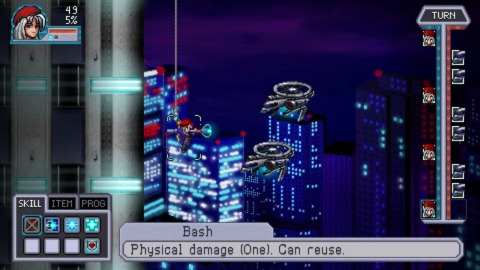
A serendipitous quirk of Indie development is that they can't make their games too long unnecessarily because that would involve spending more time designing and testing the game than their budget might allow. In the past, developers might be tempted to pad out their RPGs with busywork and grinding - the "double-spaced lines in an essay due tomorrow" of RPG design - but modern designers, perhaps having lived through one too many games that did just that, have chosen instead to simply make their games more truncated for the sake of brevity and tighter pacing.
The kings (and queens) of this approach to JRPG design are the fine folks at Zeboyd Games, who rarely produce RPGs that exceed twenty hour runtimes and yet all still feel full-bodied with lengthy progression arcs to characters and their skillsets and an always appropriate level of challenge to the combat. Part of how they pull this off is that they carefully consider each individual encounter, rather than letting you fight the same half-dozen assortments of randomly encountered foes in any given dungeon. Each conflict almost always ends with your characters gaining new skills, changing the dynamic of the battles to follow, and features foes that, while you may have encountered them individually before, it's rare you'll meet them in the same quantity and configuration twice. Cosmic Star Heroine is the most recent game of theirs I've played, and it's as well-paced as any RPG released on the SNES or Genesis (and I'll be sure to play their Cthulhu Saves Christmas at some point in the near future).
Don't feel like you have to make a JRPG, even if you have RPG Maker installed
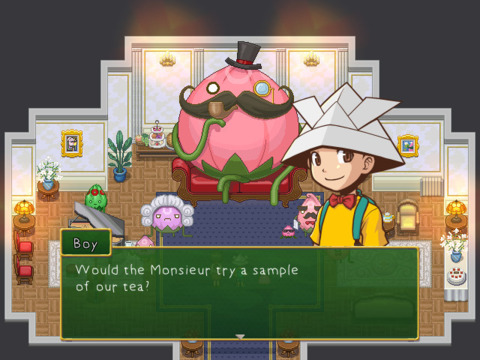
Probably the most important header, if we're talking about innovation in the Indie space. Despite being specifically designed to generate pixel JRPGs I've discovered a lot of very curious non-RPG applications of RPG Maker over the years, and I can't tell if that's to the credit of the versatility of Enterbrain's long-running consumer creation series or the ingenuity of its end users (I suspect a little of both). A non-RPG made with this software will often use the concomitant nostalgia of its 16-bit JRPG graphics and UI tools to subvert the player's expectations, or otherwise couch an unfamiliar type of game in a familiar set of trappings.
In Japan, these aberrations started with the likes of Yume Nikki, which dropped the RPG elements and became a free-form exploration game about livid dreams and journeys through the psyche. The original Corpse Party also delivered its chills in a combat-free narrative adventure. Western developers have produced To the Moon, its sequels A Bird Story and Finding Paradise, Rakuen, and The Lost Art of Innkeeping (maybe not as famous or as polished as the others, but one I recently enjoyed). They might have puzzles, they might have stealth sequences, but you're never tossed into a random encounter with a group of slimes as far as I can recall. Evidence if evidence was needed that if adventure game developers have a story to tell, they will find an avenue no matter how unlikely through which to deliver it.
